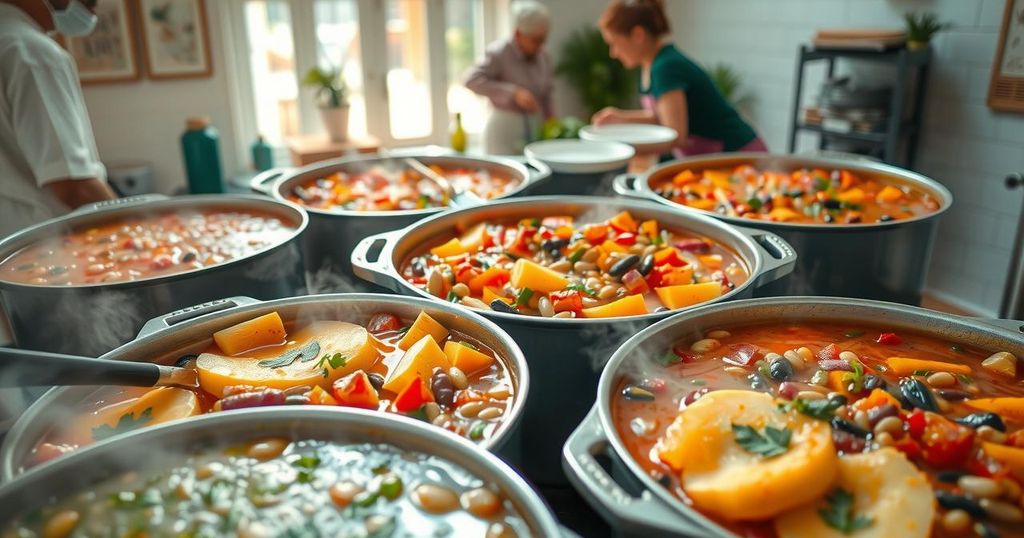Exploring the Quesadilla: A Cultural and Culinary Icon of Mexico
The article explores the quesadilla, a key element of Mexican cuisine, which raises questions regarding its definition and whether it should contain cheese. It discusses the term’s etymology, cultural significance, and various forms, highlighting the rich culinary diversity across Mexico. The ongoing debate about the quesadilla’s contents illustrates the cultural conversations around food, emphasizing its role in personal and communal experiences.
Delving into the world of quesadillas offers insights into one of Mexico’s most cherished yet debated snacks. A quesadilla is essentially a tortilla, either made from corn or flour, that is filled with various ingredients, traditionally folded in half. This seemingly simple snack encapsulates a rich cultural heritage, steeped in the merging of indigenous and Spanish culinary traditions, leading to a variety of interpretations, especially regarding whether they should include cheese.
The etymology of the term “quesadilla” traces back to Spain, deriving from the word “quesada,” which refers to a sweet cheese tart. As the dish evolved in New Spain, a fusion of local and Spanish flavors emerged, positioning the quesadilla as a symbol of Mexican culinary evolution. Despite its Spanish connection, the quesadilla adopts a distinct identity in Mexico, often straying from its original roots and adapting to local tastes and ingredients.
The quesadilla exemplifies a broader cultural narrative, reflecting the historical amalgamation of pre-Hispanic and Spanish influences in Mexican cuisine. This snack features an impressive range of variations, with different regions embracing unique fillings and preparation methods, thus creating an ongoing dialogue within Mexican culinary practices about what defines a true quesadilla.
A particularly contentious issue surrounding quesadillas is whether they should include cheese. Many dictate that the derivation of the name suggests cheese should be a constant presence. However, in places such as Mexico City, quesadillas can be filled with diverse ingredients such as mushrooms, squash blossoms, or various meats, with cheese being optional. This semantic variation delights some while igniting debate among purists and culinary aficionados alike.
To further understand quesadillas, it is essential to differentiate them from tacos. Quesadillas can be categorized by types of dough — corn or flour — and their fillings can range from cheese only to a mixture of ingredients. Cooking methods also vary, from griddle-prepared to deep-fried options, and they are available in different shapes, which can be either folded or completely sealed. Additionally, unique variations exist, such as pescadillas, which incorporate seafood, and sweet quesadillas featuring fruit and piloncillo.
In essence, quesadillas are more than mere snacks; they reveal a complex landscape of cultural exchanges and culinary evolution in Mexico. Queried about their personal preferences, food enthusiasts often recount cherished memories linked to this versatile dish. There is a universal appeal to quesadillas, making them a staple for families and individuals alike, celebrated for their simplicity and comforting nature.
As such, one should ponder whether one prefers quesadillas with cheese or without, as preferences may vary widely across different regions and families. The debate surrounding this dish serves as a reminder of the deep-seated cultural significance that food holds in creating community bonds and personal memories.
The quesadilla represents a significant aspect of Mexican cuisine, illustrating how historical influences, particularly those from the colonial era, have shaped food traditions. Its origins are deeply intertwined with both indigenous practices and Spanish culinary elements, evolving across the centuries into various forms that reflect regional uniqueness. This dish serves as a lens through which one can view the cultural complexities of Mexico, marked by its flavors, cooking techniques, and the ongoing dialogue regarding its components, specifically the inclusion or exclusion of cheese.
In summation, the quesadilla stands as a testament to Mexico’s rich culinary landscape, illustrating the confluence of indigenous and Spanish traditions. The ongoing debate about whether quesadillas should inevitably contain cheese showcases the diverse interpretations of this beloved snack, reflecting personal preferences and regional practices. Ultimately, quesadillas are a beloved staple of Mexican cuisine, inviting enthusiasts to explore their rich history and flavors while sparking conversations about culinary definitions and nostalgia.
Original Source: mexiconewsdaily.com




Post Comment